ONE POLICE PLAZA
One Police Plaza cantilevering over its base (NYC URBANISM)
One Police Plaza
Date: 1973
Architect: Gruzen & Partners
Address: 1 Police Plaza Path
Use: NYPD Headquarters
The New York Police Department's headquarters at One Police Plaza was the center of the Civic Center's postwar revitalization that also saw the creation of the Metropolitan Correctional Center, Murry Bergtraum High School, Chatham Green, Chatham Towers and a public plaza, all designed by Gruzen & Partners. The site for a new NYPD headquarters next to City Hall and the Municipal Building was the third and final in a proposal to move the police headquarters from Centre Street in Little Italy, where it had occupied a Beaux-Arts building since 1909. Gruzen & Parters were first offered the commission in 1958, but wouldn’t break ground until a decade later. To connect the new development with Park Row, the street was lowered, curving under the anchorage of the Brooklyn Bridge. Several streets including Duane and New Chambers were also closed to create the site, which would feature a public plaza connecting the police headquarters with the surrounding civic buildings.
The new police headquarters is a fifteen-story red brick cube with a matrix of punched-out windows, sitting atop a multileveled horizontal base. The corners of the cube cantilever over the base, exposing the concrete structural elements, which are disguised by the red brick the structure is wrapped in. The cube predominantly houses offices but also has a communications center and a 1,200 person auditorium. The mostly windowless base and three sub levels house a 650 car garage, holding cells, and a shooting range. A helipad on the roof of the building provides emergency transportation for police officials. The surrounding landscaped plaza, designed by architect M. Paul Friedberg, was praised by critics, helping to tie the new buildings together, creating a successful public space surrounding these new developments. When One Police Plaza opened, Paul Goldberger commented on the public plaza,
Collection of NYC Urbanism
"[the] plazas do more than set the building off esthetically and provide‐good open spaces in themselves. They tie the Police Headquarters into the surrounding neighborhood as well... the open feeling at ground level may even have the added benefit of enhancing the department's image: it is difficult to be altogether hostile to the occupant of a building whose plazas you relax in and whose open passageways you use as you rush for the subway."
Goldberger also praised Gruzen's design, "a sleek, cool building, its austere form is given warmth by its red brick." The public plaza, which Ada Louise Huxtable called "the city's finest" was the largest public plaza in the city when it opened, paved in the same red brick as One Police Plaza and featuring two public art installations; 5 in 1 (1974), a sculpture by Tony Rosenthal , and Reunion, a 1989 paving scheme by painter Valerie Jaudon and a fountain wall surrounded by honey locust trees. A single wall with a barred window and plaque on the edge of the plaza is a remnant of an 18th century revolutionary war prison and was preserved when the plaza was constructed. A group of doric columns from the 1890 Rhinelander Building are also preserved on the site.
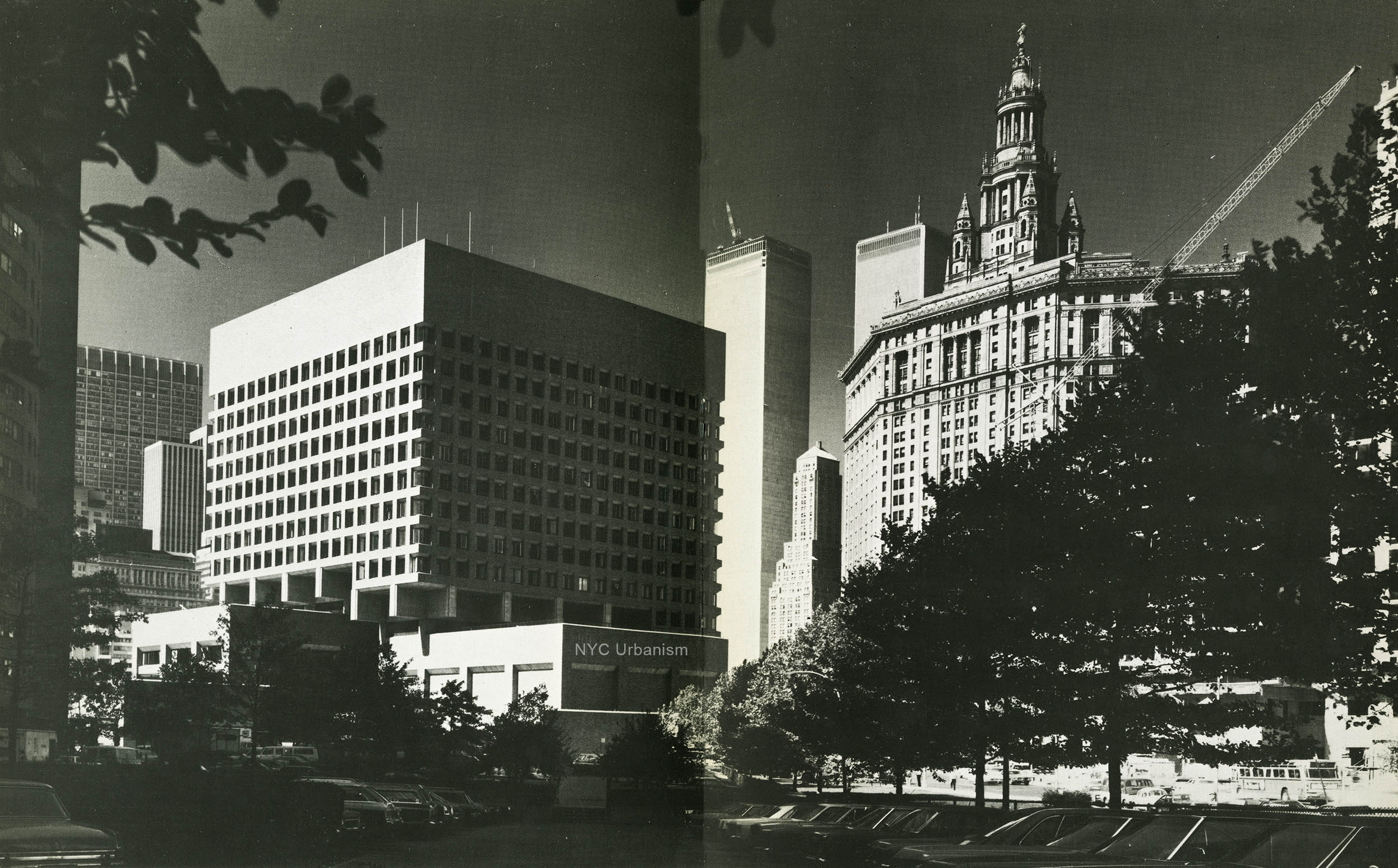
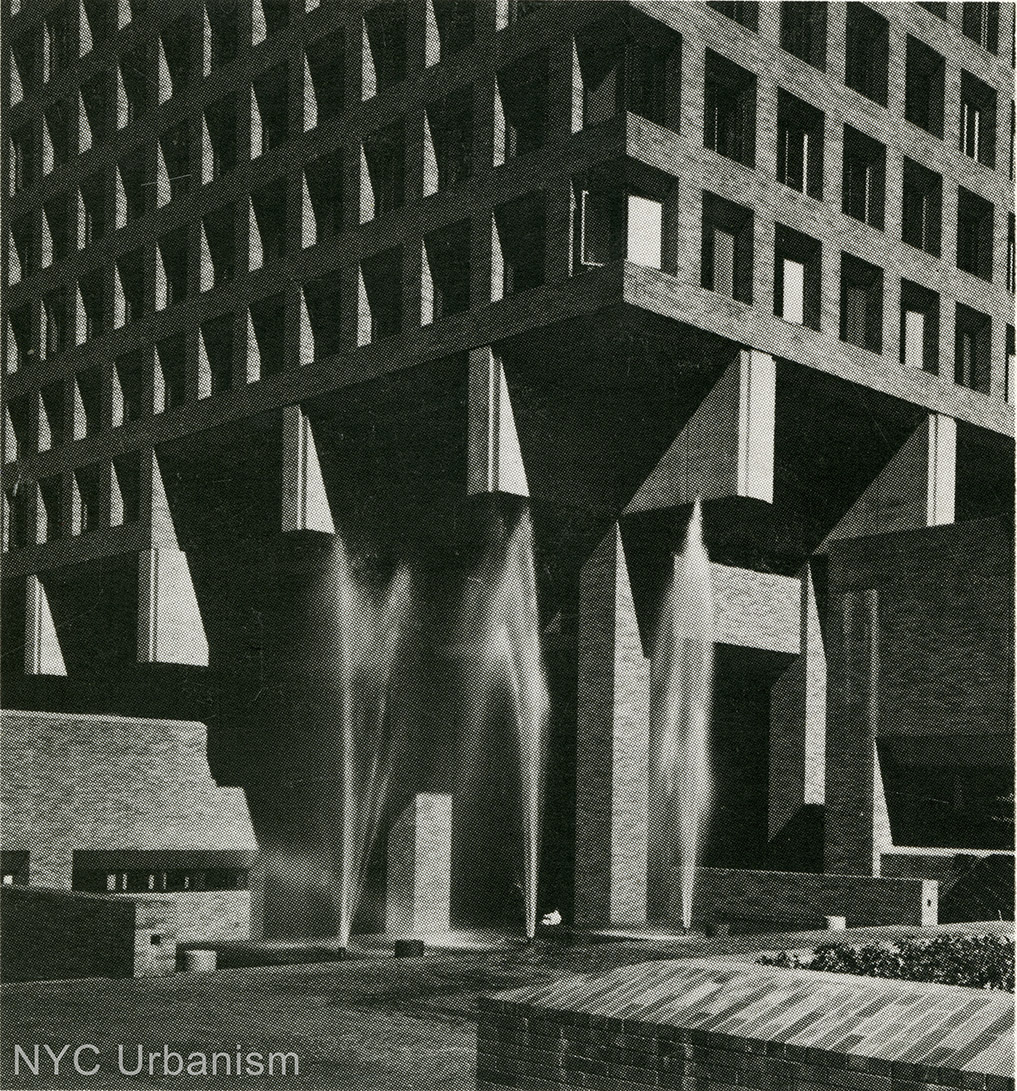
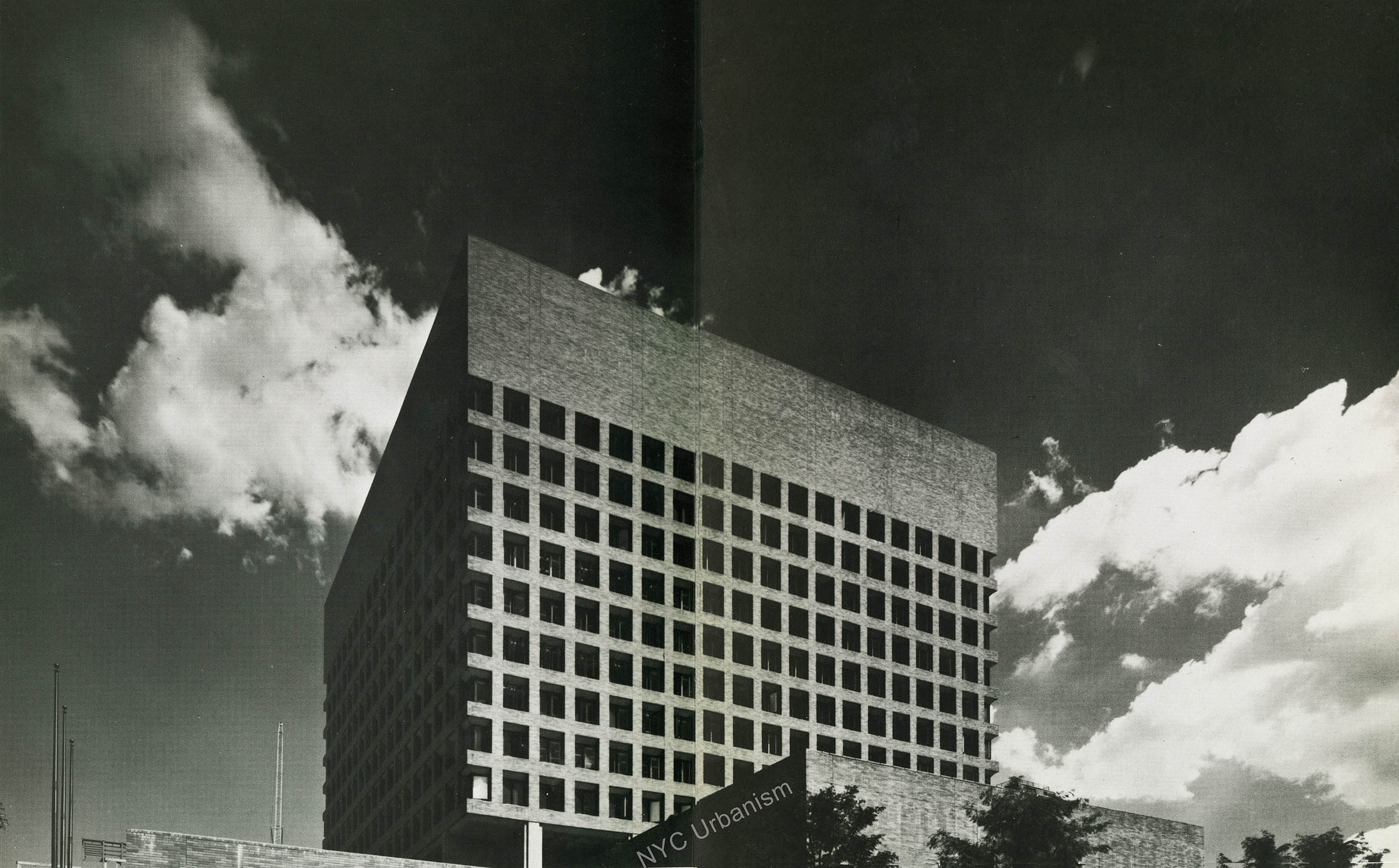



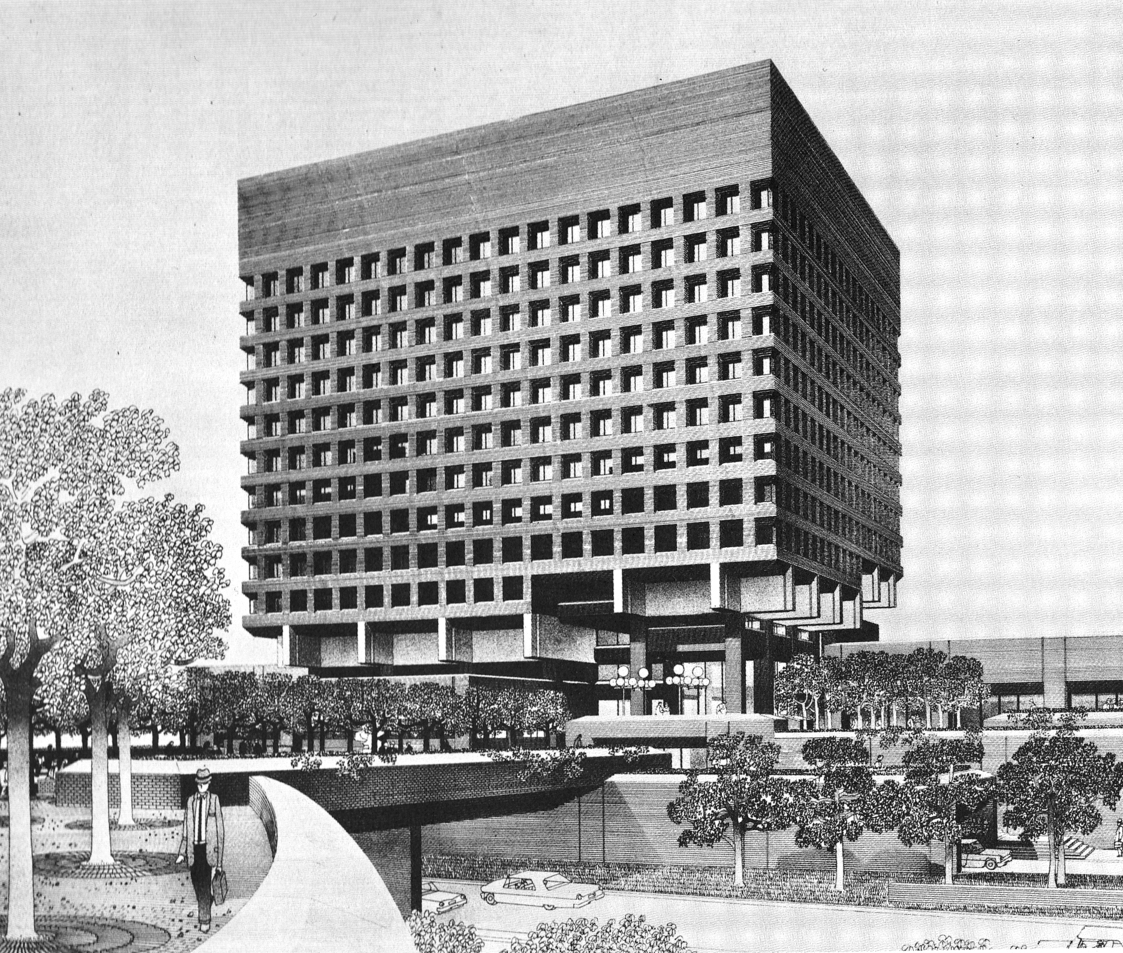
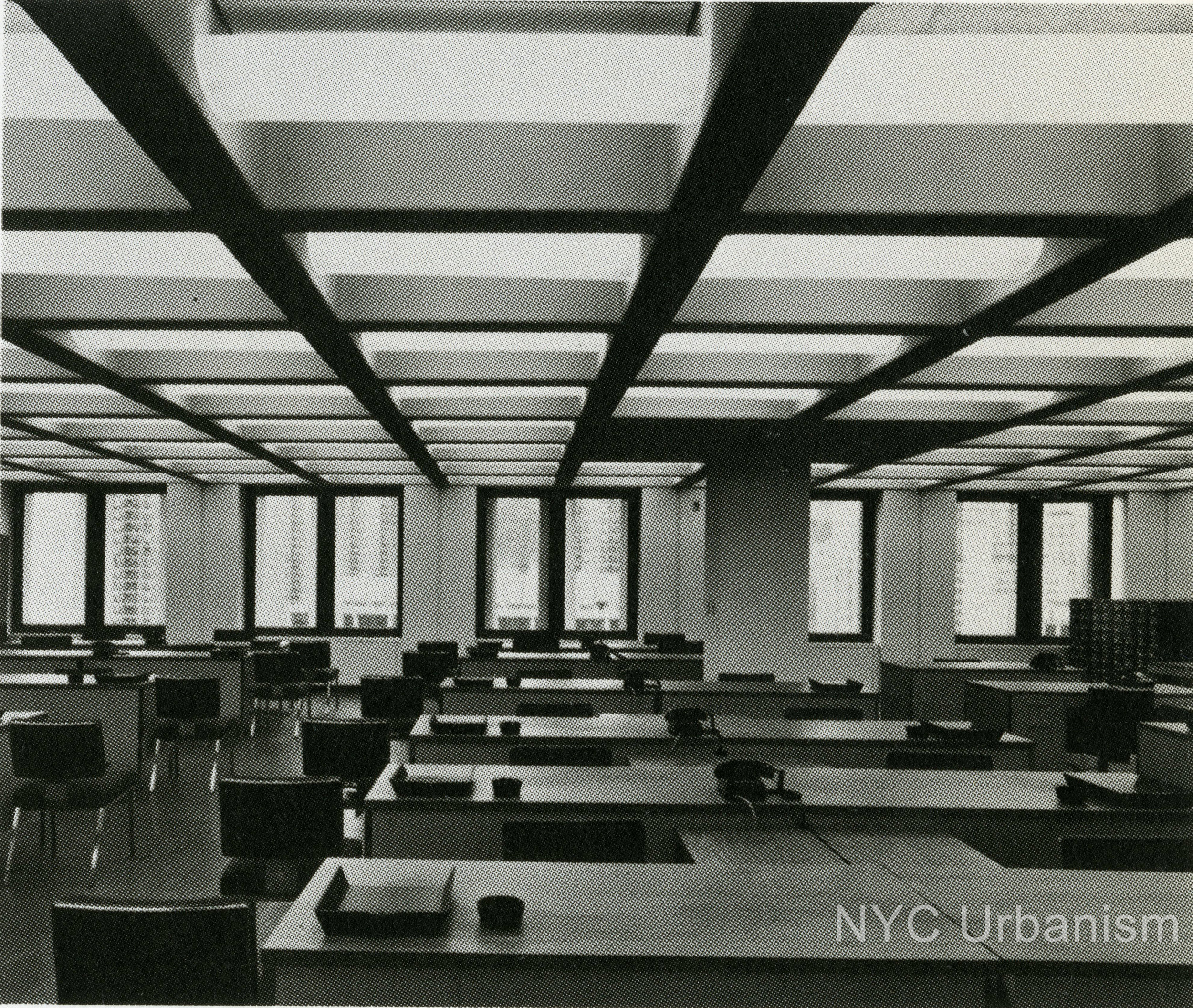
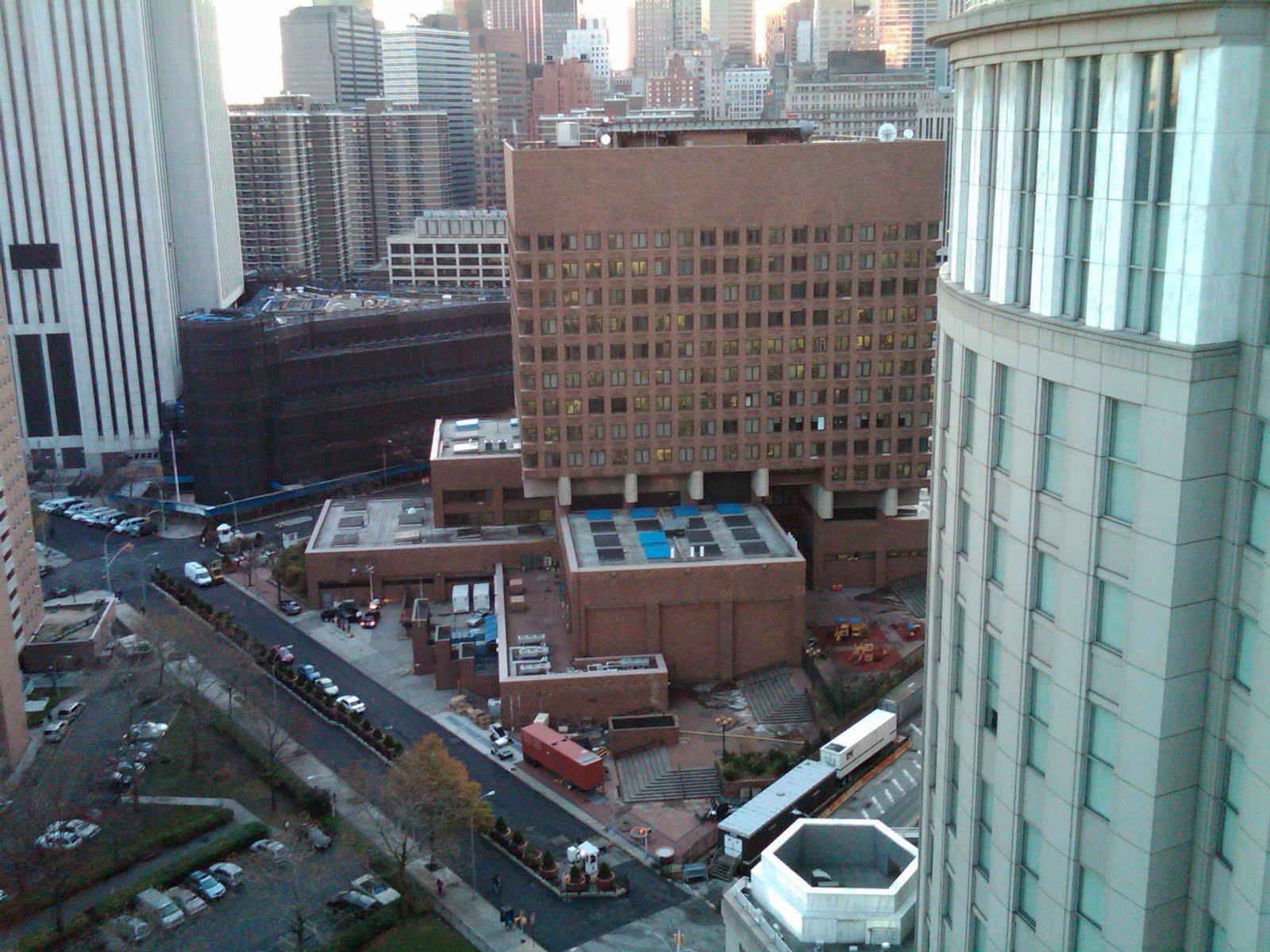
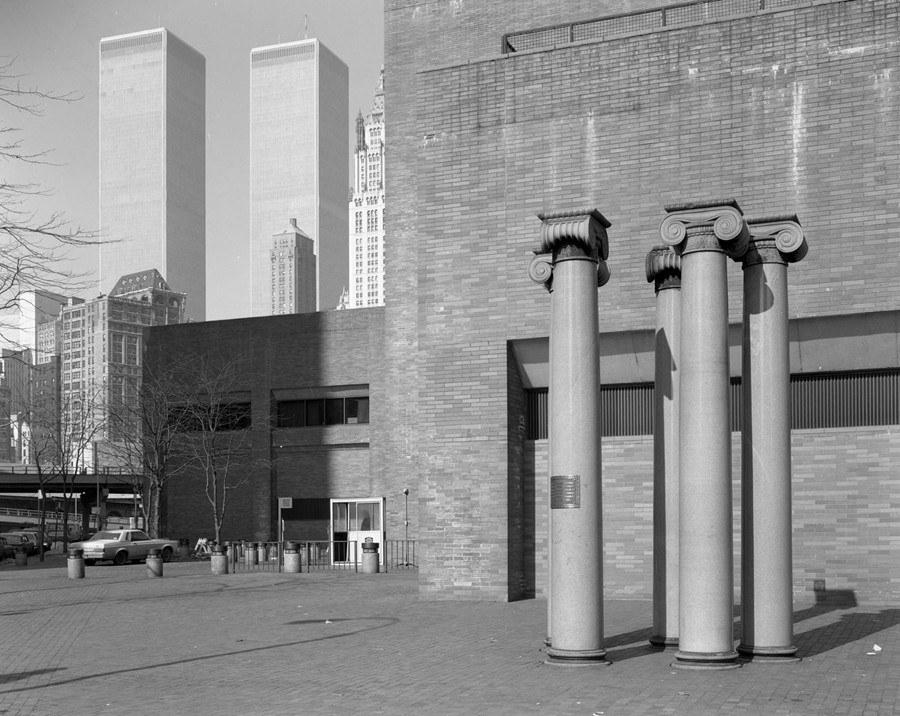
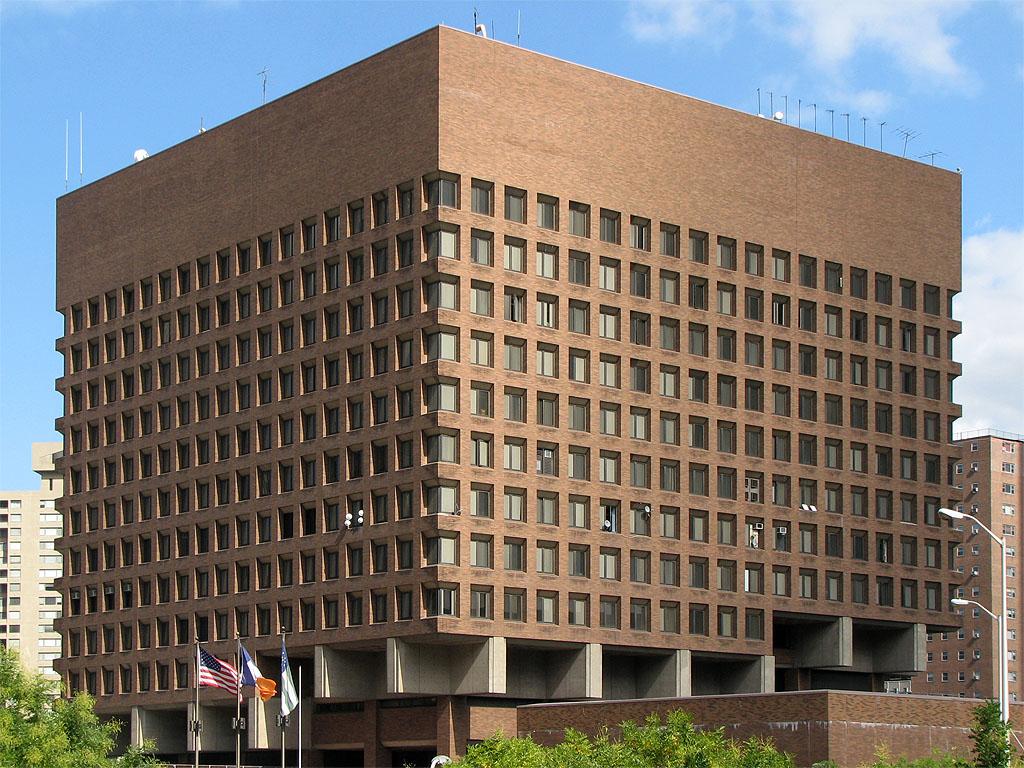
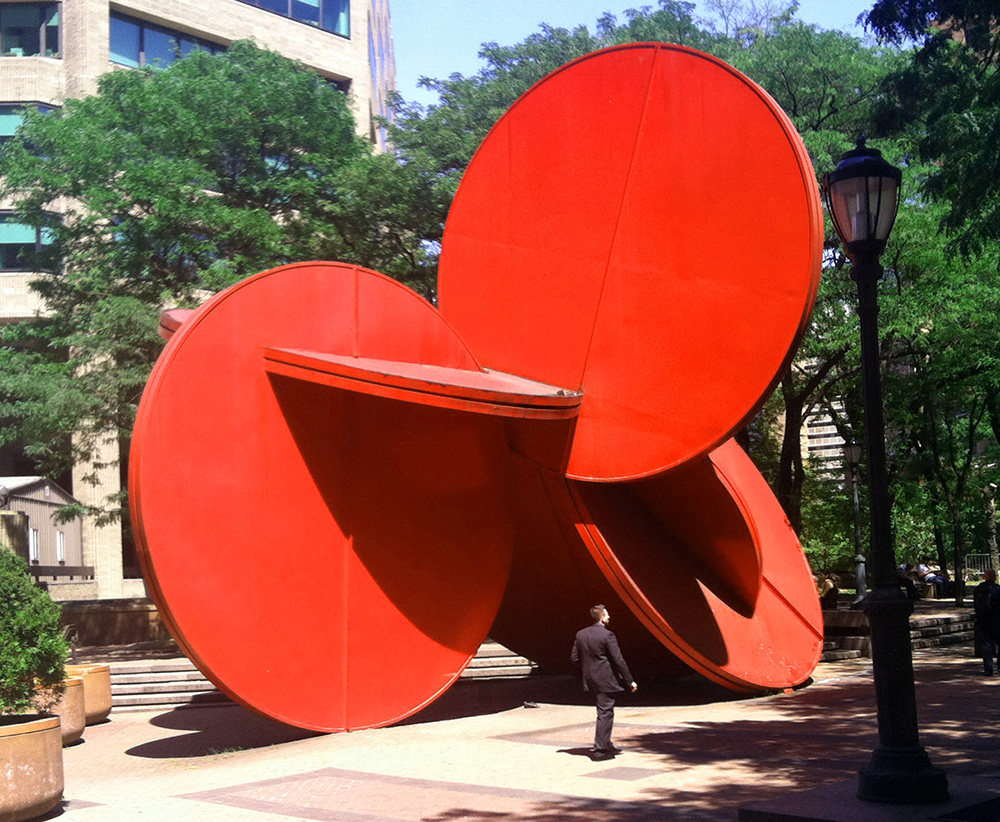
Sources:
Postal, Matthew. Creative Insider’s: One Police Plaza. Lower Manhattan Cultural Council.
Goldberger, Paul. New Police Building. The New York Times, 1973.
Seigel, Max. Police Will Open New Home in Fall. The New York Times, 1973.
Huxtable, Ada Louise. How to Build a Civic Center. The New York Times, 1973.
